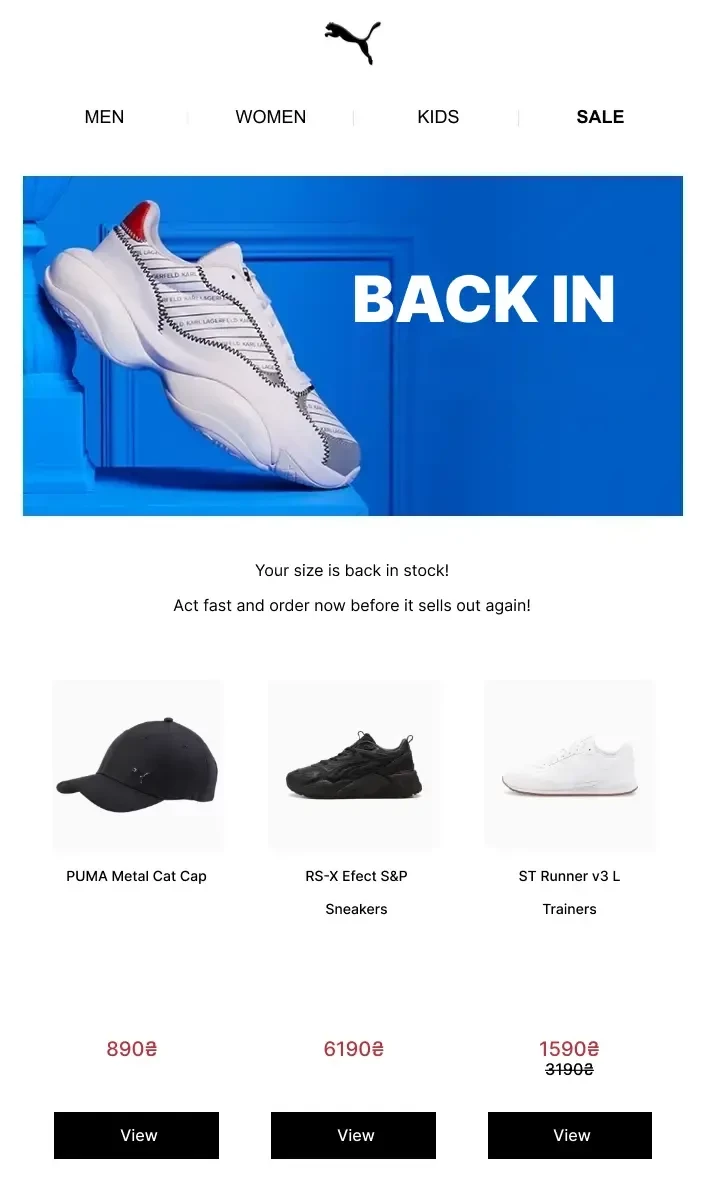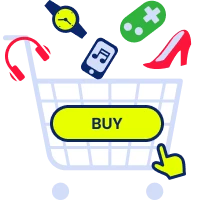09 June 2025
777
8 min
5.00

What is a Wishlist and How to Use It in Campaigns?
Content
Your customers’ inboxes and messengers are flooded with discounts, promotions, and endless CTAs. Usually, these messages are based on certain data. But will your audience actually take action on your offer? That depends on the quality of the data and how you leverage it. Wishlists are a win-win tool for creating personalized campaigns, as they reflect real customer desires, not assumptions.
In this article, we’ll explain how wishlists work and how businesses are using them for triggered campaigns.
What is a Wishlist?
A wishlist is a personalized collection of products saved by a logged-in user of an online store. Customers add items to their wishlists for various reasons, including:
- Not having enough funds to make a purchase right away.
- Wanting to compare products based on different features.
- Waiting for discounts and promotions.

For online stores, the wishlist feature is as beneficial for businesses as it is for their users, since it triples conversion rates. Imagine a person renovating their home and searching for a stylish coffee table. They find the perfect one on your website—the right color, style, and size. But the apartment isn’t ready yet, and there’s no place to store it. The user bookmarks the page… only to eventually forget about it because of the daily information overload.
Over time, they start seeing retargeting ads for your coffee tables, along with similar products on social media and other partner platforms. When the time comes to make a purchase, your table is now competing with many similar options. For the store, this presents a significant risk of lost sales. However, this can be avoided if the site has a wishlist feature.
If the user added the coffee table to their wishlist, the store could send a reminder in a few days or offer a special discount. Even without these actions, the mere fact that the product is saved in the wishlist already increases the likelihood of the user returning to it later, despite competitors’ ads.
How Wishlists Help Increase Sales in Ecommerce?
Customers who use wishlists tend to buy more items at a time. As a result, the average order value increases by 16%. Let’s take a look at how exactly these lists affect customer behavior.
Increase Engagement
Wishlist users are “warm” leads. They have already shown interest in the product, so the chance of converting them into buyers is very high. Moreover, 40% of customers believe that this option improves their shopping experience.
According to Bizrate Insights statistics, the younger the target audience of an ecommerce platform, the more important the role of wishlists in the decision-making process.

Making Mobile Online Shopping Easier
More than 50% of all online shopping is done via smartphones and this share will only grow in the future. Like computers, smartphones allow you to work with multiple tabs. But it is not always convenient. Wishlist simplifies the process because in a few clicks you can log in, save the desired item and continue shopping without having to switch between tabs.
Reduce the Number of Abandoned Carts
70.19% of customers simply leave their online shopping cart full of items without ever placing an order. Wishlists reduce this sad statistic by allowing you to postpone your purchase.
Abandoned carts can also create psychological pressure for some shoppers: making them feel as if a purchase must take place “now or never”. Wishlist works more gently—it reminds without being intrusive.
Personalize Customer Interactions
For a customer, an item added to their Wishlist can be anything from a dream to a practical necessity. And for you, it’s always invaluable data about their interests and needs. Your business has a unique opportunity to utilize this data for targeted marketing actions through trigger workflows. For example, if a customer has saved sneakers to their wish list, they can be offered similar models, sportswear, or accessories.
Types of Triggered Campaigns based on Wishlists
Remarketing based on a wish list resembles what businesses build based on an abandoned shopping cart, but there are some peculiarities.
Sleeping Users Reactivation
Has the user not visited the website for a long time and not updated their wishlist? Remind them about the products they liked and suggest replacing them with similar new products from the assortment.
Reduced Price on Items Added to the Wishlist
Sometimes, price is the only barrier between desire and purchase. That’s why discounts and special offers turn hesitation into action.

The Item is Now in Stock
Not all online stores add a “Notify When Available” button. But even when they do, users still add temporarily out-of-stock items to their wishlists. These are different functionalities that don’t compete with each other. So, as soon as a wishlist item goes back on sale, it’s worth reminding your customers about it.

Recommendations Based on the Wishlist
CDP analyzes a user’s wishlist and sends personalized recommendations of items similar to those they’ve added. For example, a user who liked the MacBook Air 13" M2 2022 might get recommendations for the MacBook Pro 13" M2 2022, or the same Air in a different color. If they added Nike sneakers to the wishlist, they might be suggested a newer version of the selected model or alternatives from Adidas or Puma.
Limited Amount in Stock
“Your wishlist item is almost sold out! Only three dresses in your size are left.” Who wouldn’t react to the risk of missing out on an opportunity to purchase a long-desired thing? FOMO messages create a sense of urgency and encourage purchase even better if they contain a timer or counter.
Personalized offers for the Wishlist
“Ready to upgrade? Your wishlist item + one more = -15% on the bundle!” A user who hasn’t returned to purchase for a specific period will likely have forgotten about the product they liked or lost interest in. A personalized offer can remind and re-engage with the product and increase the average check.
Set Up Effective Triggers for Wishlists and Boost Sales with Yespo
Yespo is an omnichannel customer data collection and marketing automation platform that helps businesses gather and use user data to personalize communications and triggered campaigns across multiple channels. With our help, top Ukrainian companies increased conversions from 100% to 600%. How can you replicate their success using Yespo’s capabilities?
Collect User Data and Personalize Communications
CDP tracks user behavior across various channels—the website, app, email, and messengers. Web tracking helps the system collect data that can be used to segment the audience and build a unified profile for each customer. This gives the business a holistic view of users’ needs and interests.

Launch Triggered Campaigns
The platform supports setting up automatic workflows for various events, such as abandoned views, carts, or adding items to wishlists. This allows you to promptly remind your customers about incomplete purchases or inform them about changes in the availability or price of items of interest.

Set Up Automated Workflows
Yespo provides tools to automate complex communication chains and track the effectiveness of each workflow.

Conclusion
Wishlists are among the most valuable sources of information about a user, directly reflecting their preferences and interests. Yespo customers, for example, use this data for segmentation, predicting behavior and purchase readiness, and setting up personalized triggers in email campaigns.
Businesses that have yet to implement wishlists and related triggered workflows, such as product reminders or personalized recommendations, are missing valuable opportunities to enhance the user experience, boost conversion rates, and increase average order value.
.webp)

